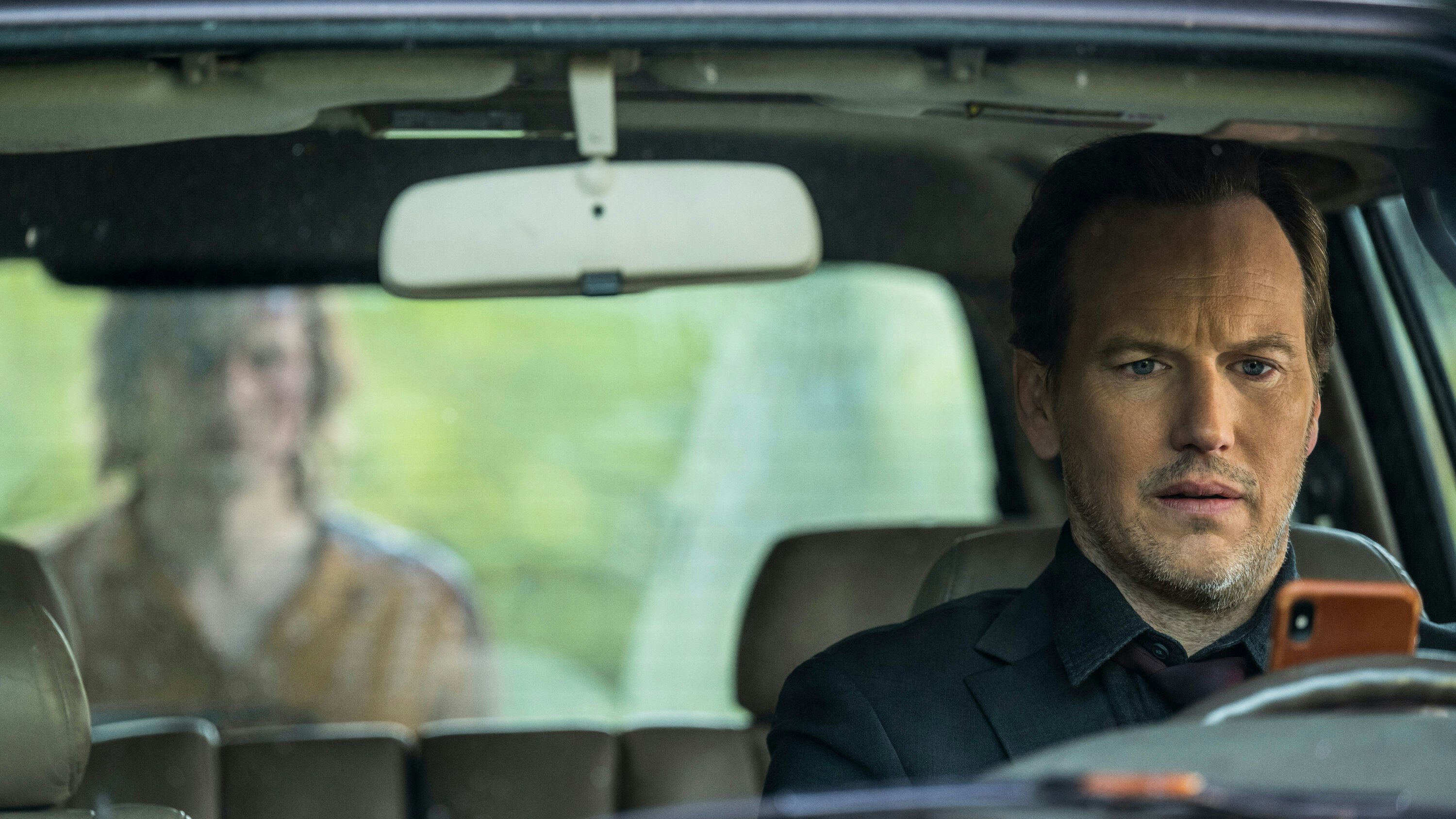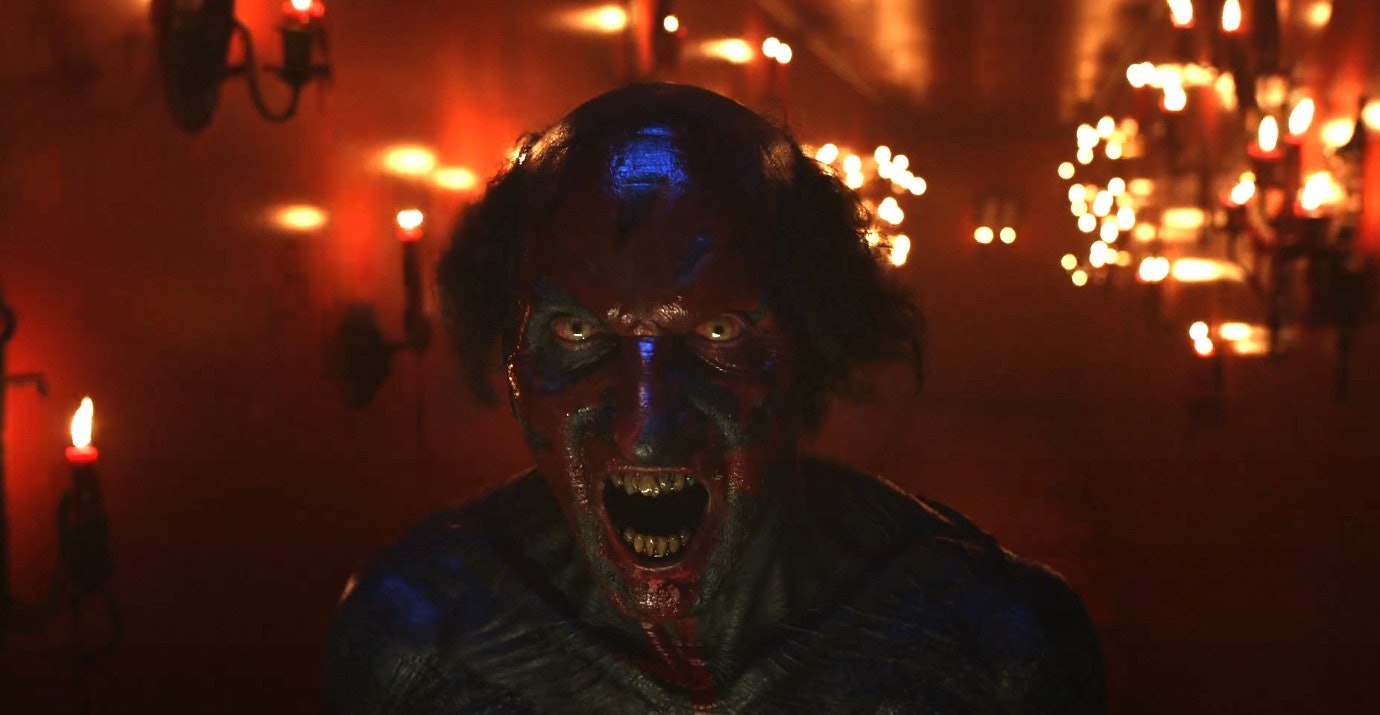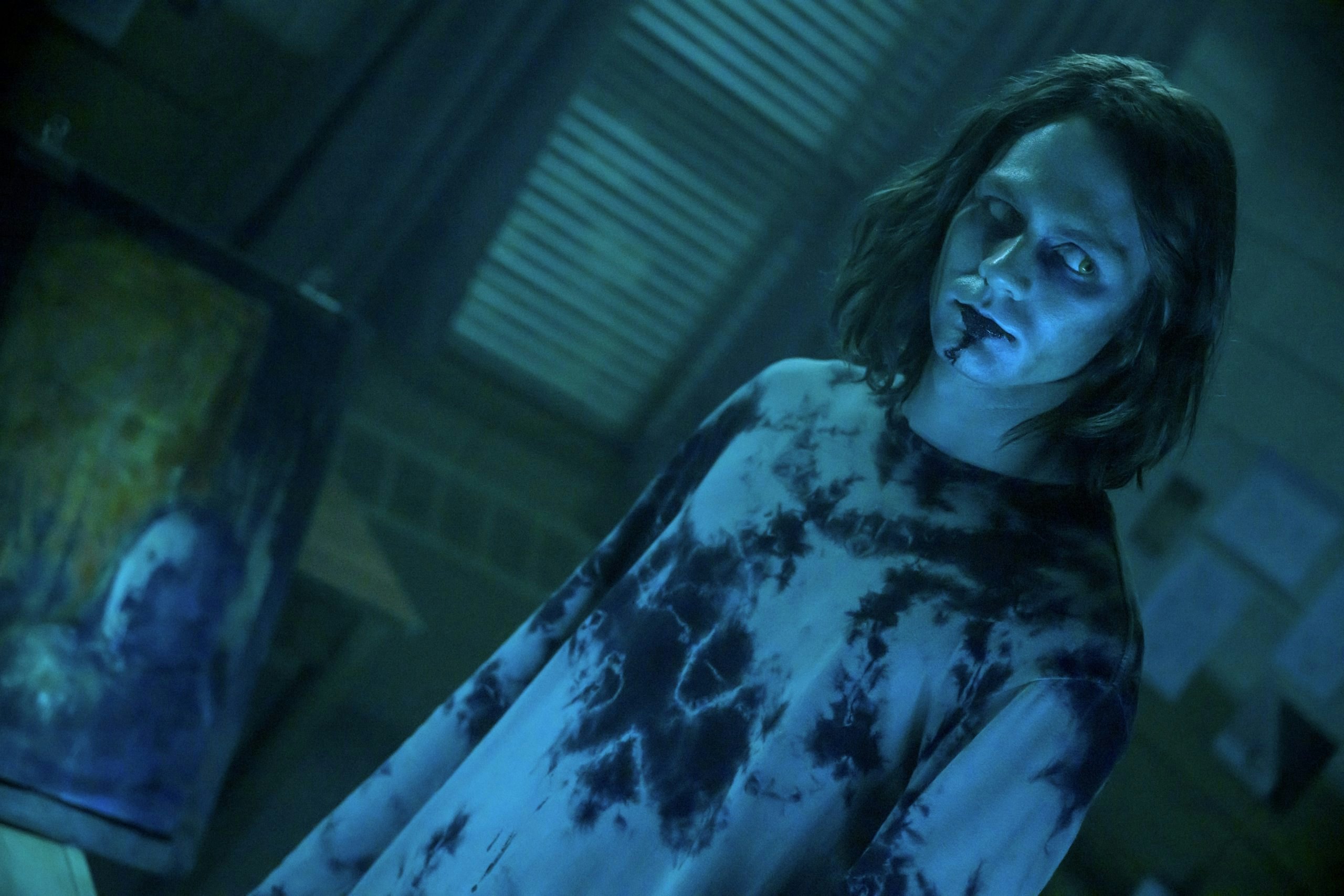
It’s an unsettling feeling that many know all too well: the foreboding suspicion that someone, or something, is behind you. That feeling has morphed over the years into a trope, one that became a mainstay in horror, and for good reason. But how effective can that concept be when employed time and time again? When the original Insidious film swept the horror world in 2010, director-writer duo James Wan and Leigh Whannell showed audiences that the trope could be a strategic smoking gun for scares that would become iconic within the genre. Thirteen years and several installments later, Insidious: The Red Door returns to The Further and brings a smart and impressive use of the franchise’s best trope along with it.
The Red Door gives us a taste of what to expect in its opening, where we reconvene with the Lambert family nine years after the ending of Insidious: Chapter 2. Josh Lambert (Patrick Wilson) sits in his car composing text messages to his now college-aged son Dalton (Ty Simpkins), a moody entering-freshman who holds disdain for his father following his parents’ divorce. He offers to drive his son to his college move-in weekend and help him get settled, an idea concocted by his ex-wife, Rose Byrne’s Renai.

But as the pair exchange fraught, disconnected dialogue with one another over their phones, a presence seen out of Josh’s back windshield keeps getting closer and closer. It’s blurry, so we can’t make out who or what, and it seems human—but something is off. That instinct is satisfied when Josh leans into the passenger seat to retrieve an item from his bag, blocking our view for a moment before the film reveals to us that the entity, whatever it was, has disappeared.
It’s an unnerving moment, one that marks that his new film — the third part of the original Insidious story but the fifth in the overall franchise — is going back to square one on the scares, giving fans a taste of what made the series famous in the first place. Horror lovers the world over recognize the image of Wilson’s Josh sitting in the Lambert kitchen with the series’ most iconic villain, The Lipstick-Face Demon, as he’s become colloquially known, sitting menacingly behind him. That image has become one of the most recognizable in the genre, signifying a horrific moment in the Lamberts’ struggle against the demon realm on screen as well as an effective scare in the technical sense that plays on common human paranoia.
The Red Door knows what it has in this trope and takes it a step further, deploying the iconographical tactic several times throughout the film. Chalk it up to Wilson’s own nostalgia for the early days of the series, perhaps, but no matter the reason to return to the roots, it’s done well and it works. Early on in the film, Josh takes it upon himself to get checked out due to strange occurrences that he believes might have a medical explanation (but that we know is due to his and Dalton’s forgotten past connections to The Further). He undergoes an MRI during which the power mysteriously goes out, leaving him trapped alone in the cylindrical tunnel where patients must lie as part of the scanning process. I know what you’re thinking: An entity can’t possibly sneak up behind you in there. Oh, but it can, and it will — and it’s a moment that crawls upon you like an animal sneaking into the lair of its prey in the night.

The film plays with more conventional and obvious usage of the trope, too. At the end of the film, Josh finds himself alone in The Further, doing everything in his lonely power to keep The Red Door closed while demons try to penetrate its bounds. Positioned exactly like the rest of the what’s-behind-you shots, the demon bursts through the door and grabs Josh, terrifying audiences and effectively flipping the script both in the narrative and in the trope in one fell swoop.
The concept even plays into a major visual part in the film’s opening credits in an unexpected way, which highlights the frightening artwork Dalton excels at drawing. During the sequence, there is a shot of a photograph of Lorraine Lambert, Josh’s mother, played in her older age by Barbara Hershey. But seconds after it is shown, the back of the photo is revealed to be one of Dalton’s sinister drawings that end up leading him to rediscover The Further and The Red Door itself. It’s smart foreshadowing that turns our favorite scare tactic on its ear, though implying its connection to it quite obviously if one is able to catch the moment.
Insidious: The Red Door is crafted as a love letter to the trope it popularized, while also inventing new ways to explore what that trope is capable of. And the film certainly proves that while repetition can burn out a concept, that notion simply doesn’t apply to the way Wan and Whannell’s beloved series ratchets up the tensions and preys upon our base human fear of being caught unawares.







